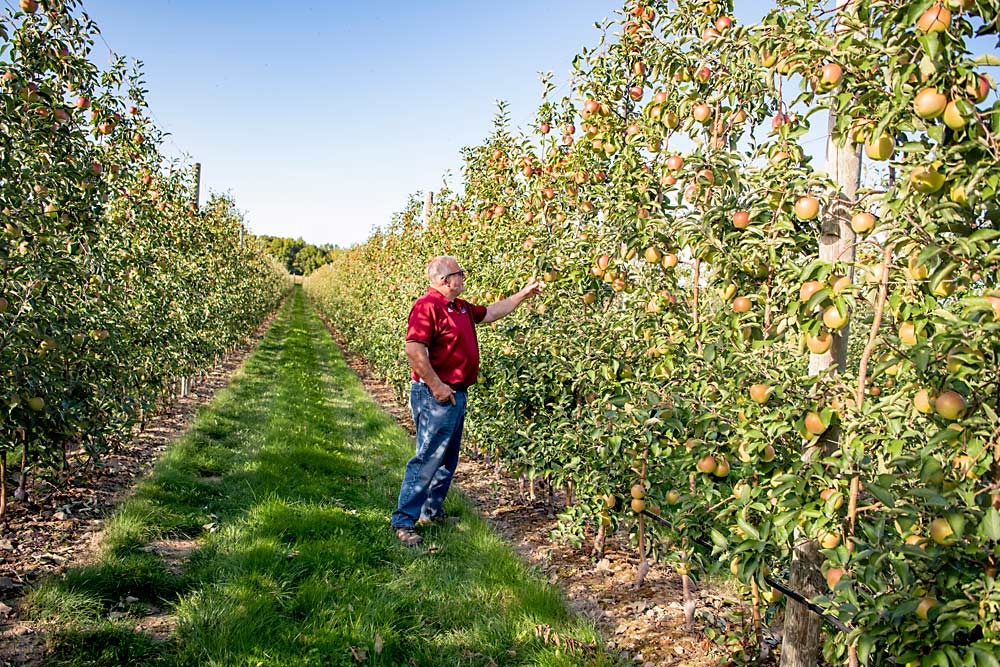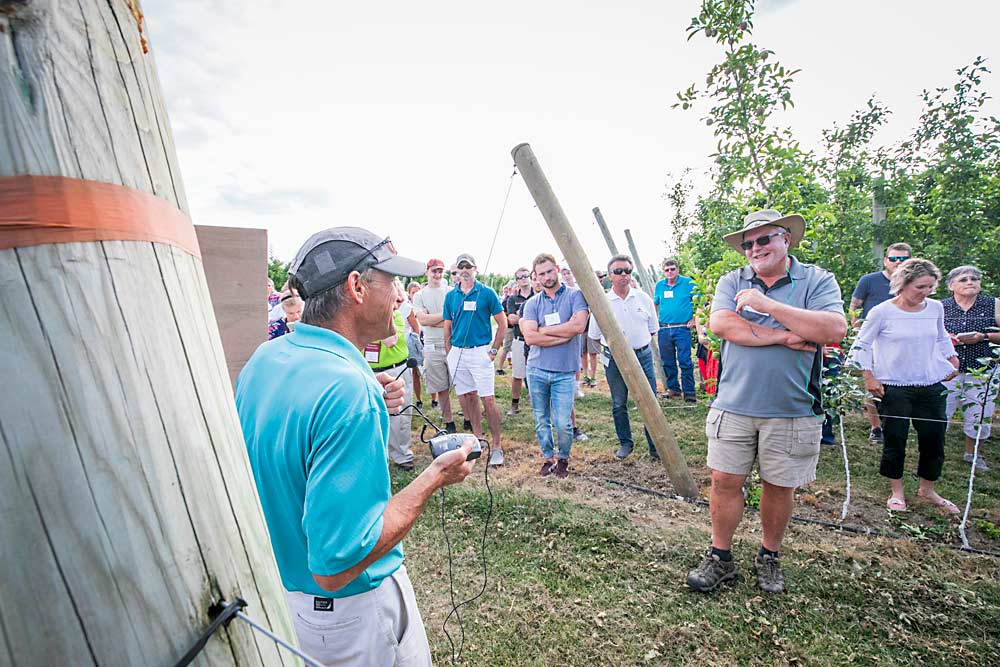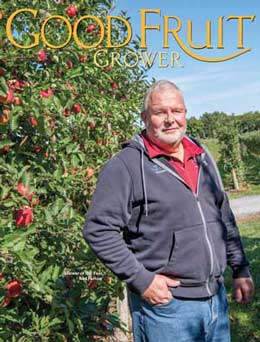
Growers in New York and across the Eastern U.S. have made great strides in the past 20 years finding and fine-tuning high-density orchard systems that work in their climate. That’s the foundation of precision horticulture. The next step to profitability, and what growers are grappling with today, is precision crop load management.
“Crop load management becomes of maximum value when you have the right site, the right rootstock, the right system and the right variety,” Rod Farrow said. “That’s the key today to our next jump.”
His interest in crop load started with his mentor, George Lamont. They didn’t have money to hand-thin, so they began tinkering with different rates and timings of NAA (napthaleneacetic acid) and found that layering four or five low-rate sprays reduced the risk of overthinning while getting closest to their targets.
Then, the carbohydrate model, developed by Cornell physiologists Terence Robinson and Alan Lakso, changed the game, Farrow said. It helps growers understand how weather conditions influence trees’ carbohydrate status and the likely efficacy of chemical thinners. Growers use the model to plan sprays, but Farrow said he also uses it to look backward: Did the weather actually line up with the prediction? If they didn’t get good thinning weather, they can feel confident to spray again sooner.
“People think we are really aggressive because we do five thinning sprays, but it’s actually conservative,” Farrow said. “It’s lower risk to do multiple sprays.”
While the model now has a user-friendly mobile app, in the early days only Robinson could run the complex model. Robinson recalls Farrow’s enthusiasm for the tool, so much that one year while he was speaking at a conference in Chile, not updating the model, Farrow sent him an email: “You have to hurry back, I’m addicted to carbohydrates!”
“That was his thinking: If I can get the crop number right, it will make me $5,000 more, so it doesn’t matter if it costs $500 more to do the pruning or the $200 more to do the bud counts,” Robinson said. “He started with precision pruning before anyone else in the state.”
The simplicity of super spindle systems makes that bud-count-based approach easier to do, Robinson said. It’s hard to convince anyone to count a 300-bud tree, he said, but 100 buds is manageable.
Farrow’s passion for crop load management led Robinson to invite him to be an official collaborator on a new, federally funded research project looking at technology to advance precision crop management. Farrow is the only nonscientist on the team.

Now, Farrow believes that blossom thinning represents the next frontier for Eastern apple growers, to help them keep pace with Washington producers. Bloom thinning offers the benefits of boosting Gala size, and therefore returns, and helping Honeycrisp return bloom.
But lime sulfur and oil, the bloom thinning mainstay for the Western U.S., poses too much of a russet risk in the New York climate, he said, recalling a year when he and Lamont cracked an entire crop of Empires.
The New York growers experimenting with bloom thinning use ATS (ammonium thiosulfate), Farrow said, but it does not burn as far down the pollen tube as lime sulfur, making precise timing even more critical.
“We didn’t get anywhere near adequate thinning this year because we went from pink to petal fall so fast we couldn’t stop the fertilization,” Farrow said.
The unpredictability of weather at bloom in New York — never above 55 degrees Fahrenheit in 2018, never below 90 degrees this year — makes bloom thinning challenging.
“Someday, we’ll have programs for both of those,” Farrow said. “We just have to find the right program.”
—by Kate Prengaman







Leave A Comment